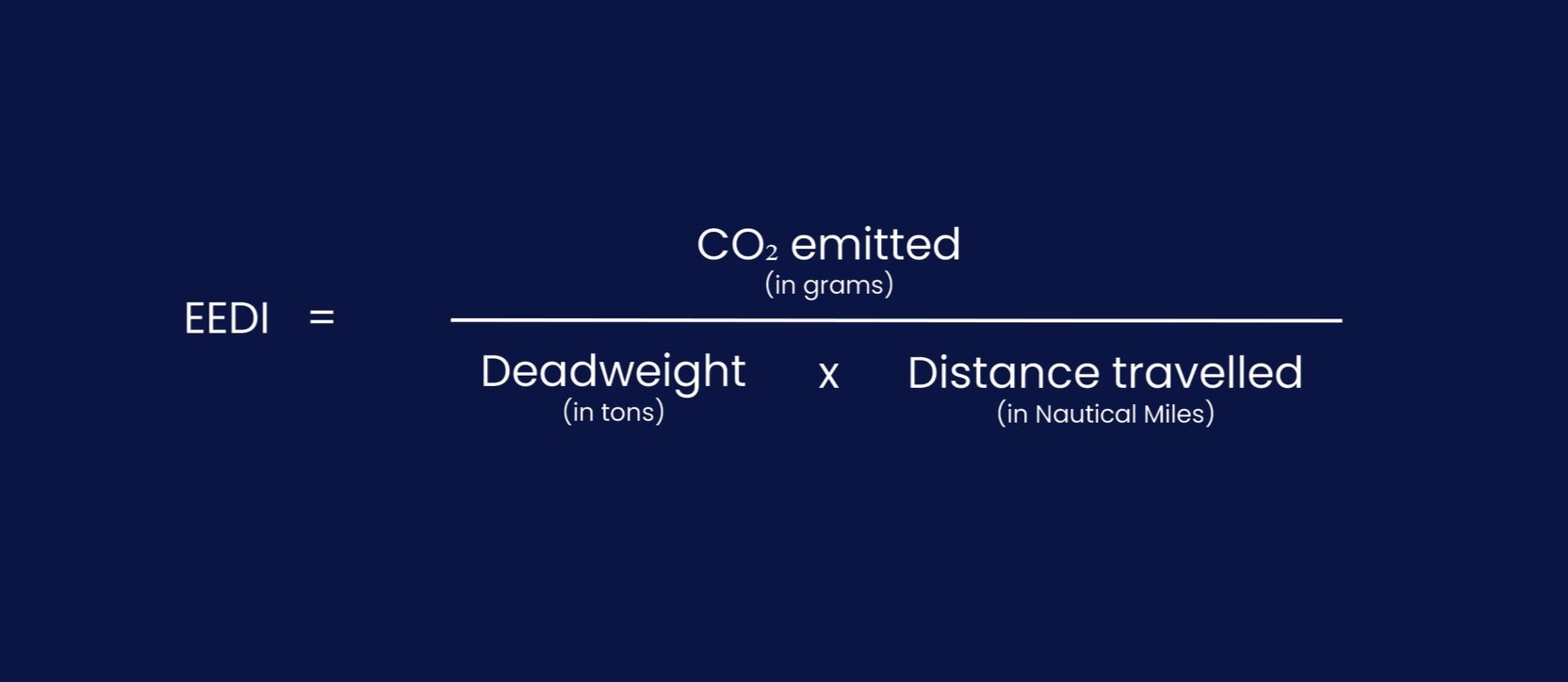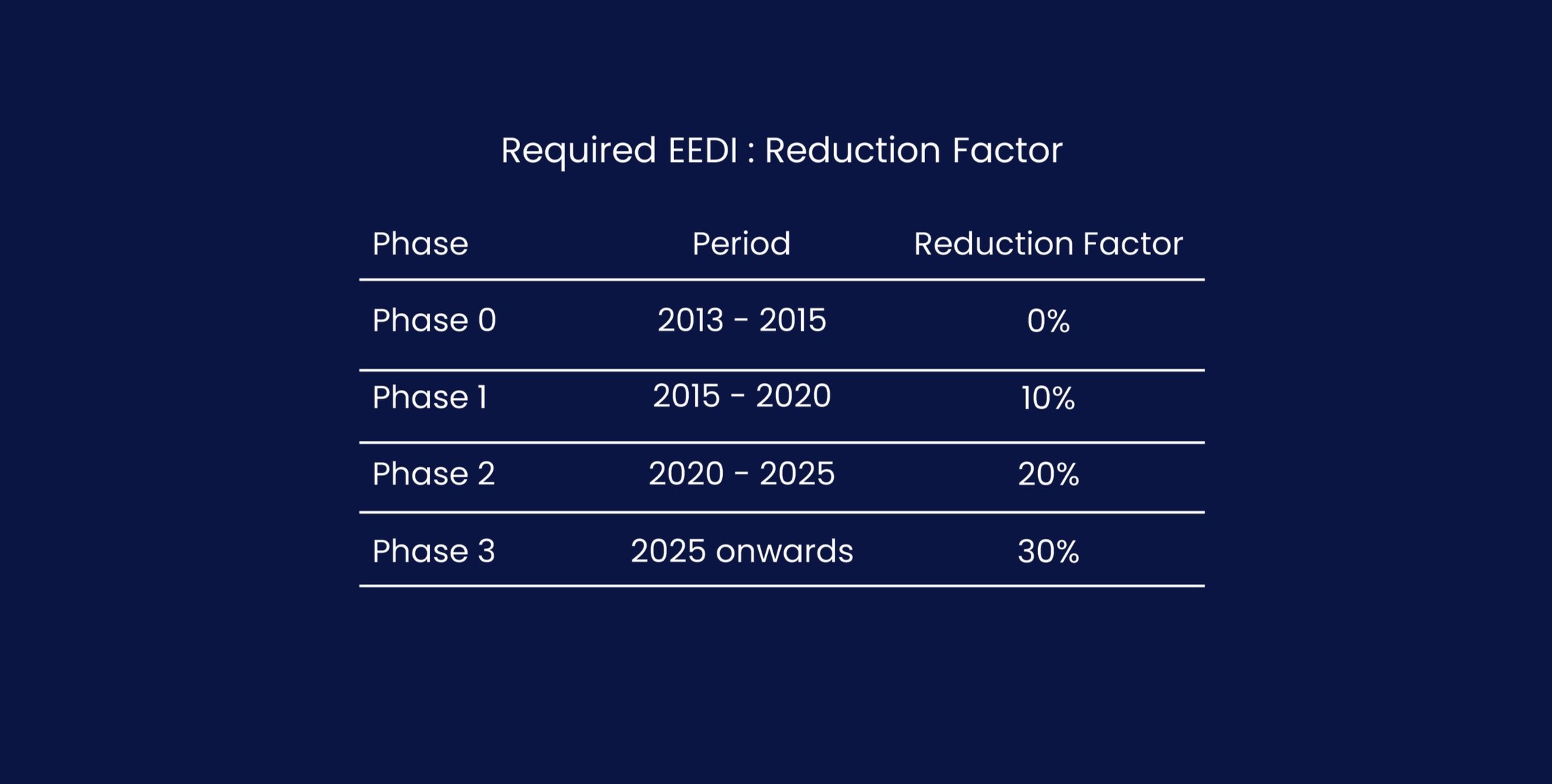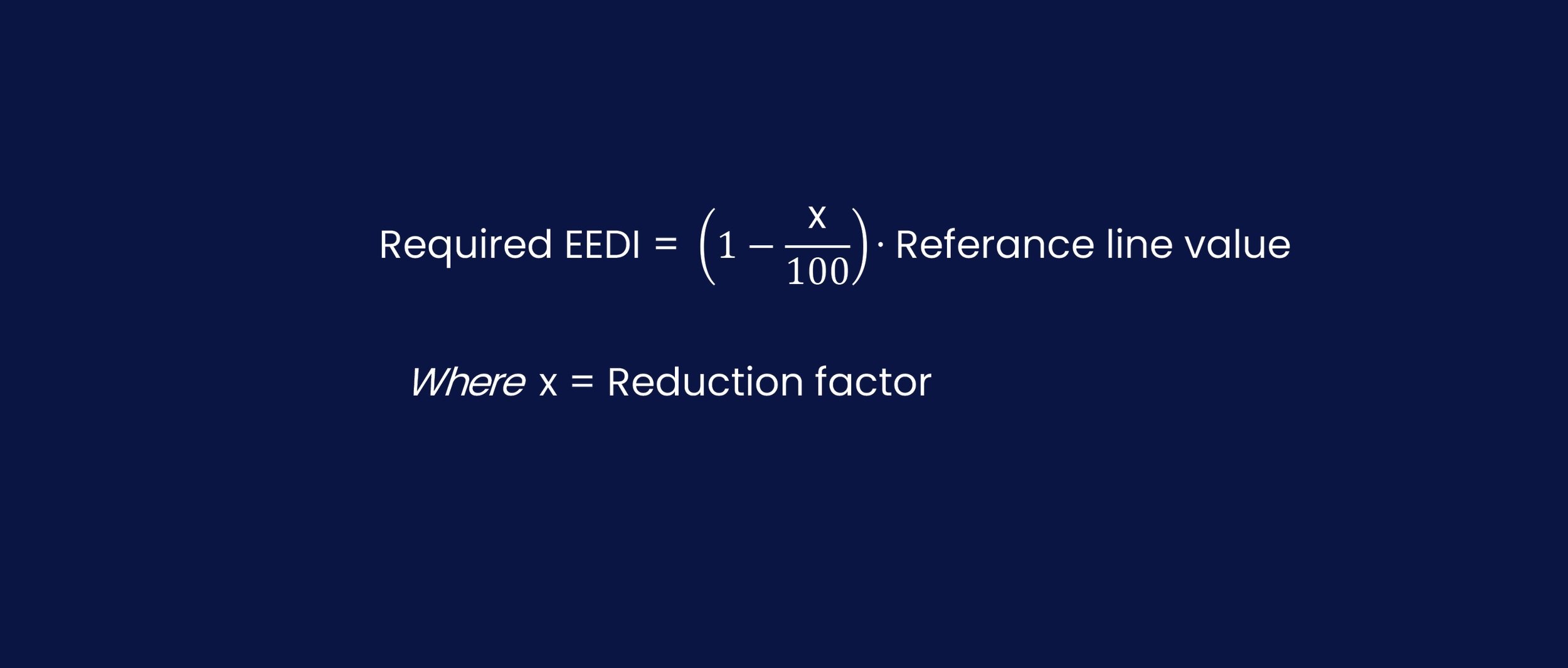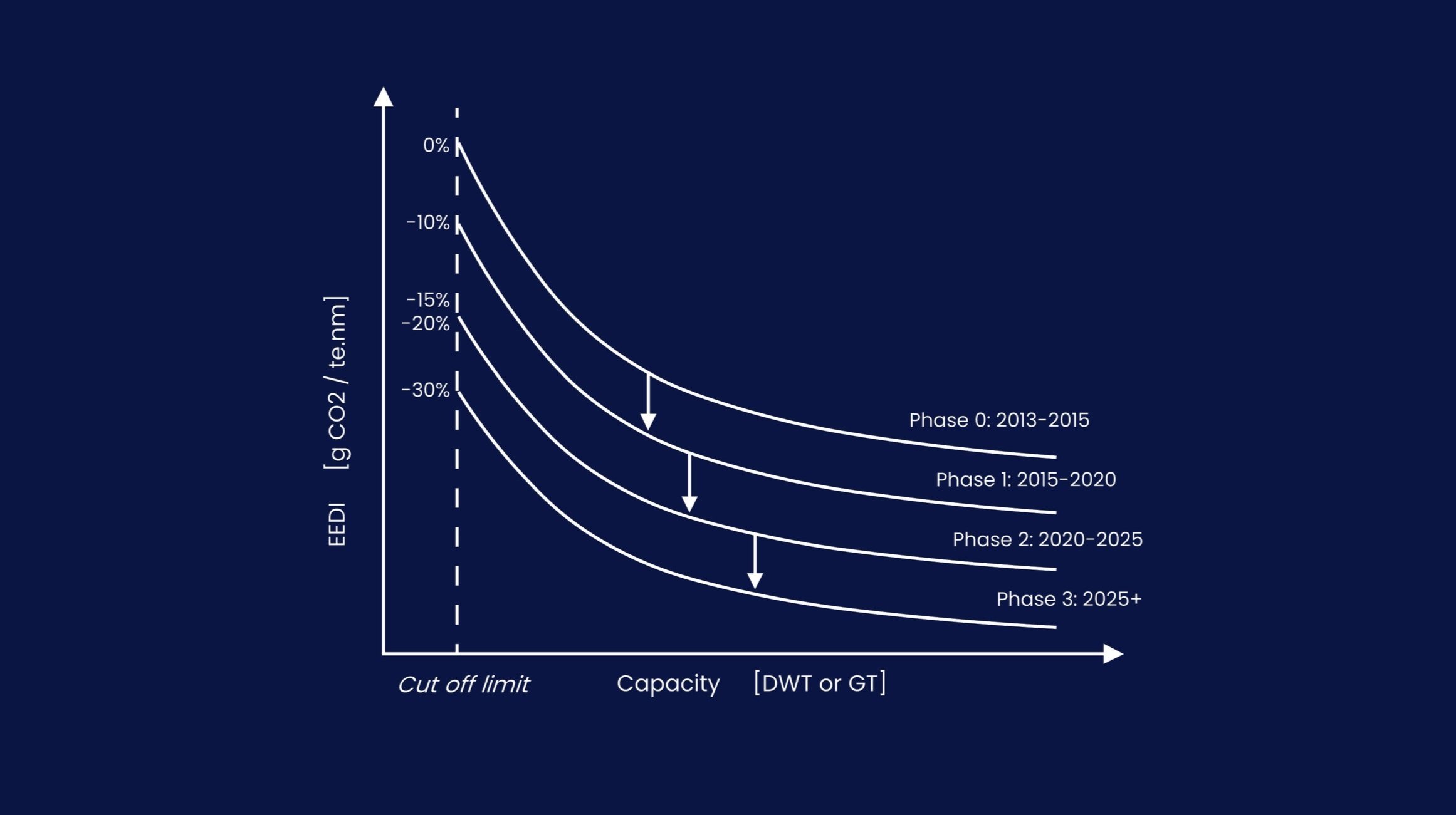EEDI
EEDI regulation applies to newbuilds of 400 gross tonnage and above. Current cost impact is limited.
Ships that have a mandatory EEDI include the following ship types: tankers, bulk carriers, gas carriers, general cargo ships, container ships, refrigerated cargo carries, combination carriers, LNG carriers, ro-ro cargo ships (vehicle carriers), ro-ro passenger ships and cruise passenger ships having non-conventional propulsion.
The EEDI mandates a CO2 reduction level for newbuilds in 2025 of 30% with respect to a 2000 - 2010 average.
Answer all your questions and download sources
About EEDI
The EEDI (Energy Efficiency Design Index) is a technical measure that aims at promoting the use of more energy efficient (less polluting) equipment and engines in newbuilds. The EEDI is measured in grams of carbon dioxide per ship’s capacity-mile. The smaller the EEDI, the more energy efficient ship design.
EEDI regulation applies to ships of 400 gross tonnage and above, engaged in international voyages (except platforms, drilling rigs and those not propelled by mechanical means such as barges). Class-approved International Energy Efficiency (IEE) Certificate will be issued for a ship whose compliance with the regulation is verified. Ships that have a mandatory EEDI include the following ship types: tankers, bulk carriers, gas carriers, general cargo ships, container ships, refrigerated cargo carries, combination carriers, LNG carriers, ro-ro cargo ships (vehicle carriers), ro-ro passenger ships and cruise passenger ships having non-conventional propulsion.
The EEDI requires a minimum energy efficiency level for different ship type and size segments. This equates to a CO2 reduction level for newbuilds in 2025 of 30%. The reduction for applicable ship types is calculated from a reference line representing the average efficiency for ships built between 2000 and 2010.
Shipyards are responsible for the calculation of the EEDI, this is then verified by classification societies. For this purpose, shipyards have to prepare a technical file containing the EEDI calculation.
Forward from 2025 the CO2 reduction level will be tightened every five years to keep up with innovations and new techniques. For container ships, the EEDI reduction rate is enhanced as follows:
For a containership of 200,000 DWT and above, the EEDI reduction rate is set at 50% from 2022
For a containership of 120,000 DWT and above but less than 200,000 DWT, 45% from 2022
For a containership of 80,000 DWT and above but less than 120,000 DWT, 40% from 2022
For a containership of 40,000 DWT and above but less than 80,000 DWT, 35% from 2022
For a containership of 15,000 DWT and above but less than 40,000 DWT, 30% from 2022
The European Union has stated that it has intentions to publish the technical efficiency (EEDI or EIV) for each ship that calls at ports in the EU in their recently adopted regulation on Monitoring, Reporting and Verification (MRV) of emissions from maritime transport.
References
MARPOL - EEDI SEEMP
IMO - Energy Efficiency Measures
Danish Shipping - Calculation tool for assessment of ships' energy consumption and fuel gas emissions, including CO2 (EEDI)
Valores Global - Ship Energy Efficiency: here is all you need to know
IRClass - Implementing Energy Efficiency Design Index (EEDI)
DNV - Guidelines for Determination of the Energy Efficiency Design Index




